Results 1,831 to 1,840 of 12089
Thread: Anandtech News
-
05-01-12, 01:30 PM #1831
Anandtech: NEC PA271W - When Accuracy and Consistancy Matter
As long as I’ve been following, using, or writing about computers, NEC has been a leader in displays. From the early MultiSync monitors to their current line of LCDs, they have been focused more on pushing performance than on dropping price, which has kept many of us from owning one of their displays. Of course, there is a large swath of users that always want to have the best, and are willing to pay for it.
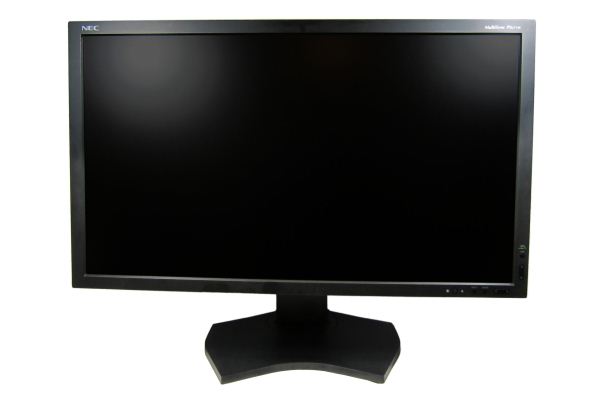
Back with a CRT, this was pretty easy to do. We didn’t have to worry about lag, we could run multiple resolutions on a display without worrying about a native resolution, and higher resolutions, faster refresh rates, and better sharpness, were likely going to work for most power users. Now the field is a little different, as you have to worry about the native resolution of your panel, the response time, viewing angles, color quality, and more. All of this has led to a marketplace with different solutions for different needs than before.
NEC is still there trying to lead this market, but are they still a good universal choice for anyone that wants the best? Or has their goal of being the best led them to specialize in certain areas of performance that make their panels a better choice for a certain type of user instead of a universal winner?
More...
-
05-01-12, 05:30 PM #1832
Anandtech: The HTC One X for AT&T Review
For just over a week, I’ve been using two phones interchangeably. The first is the Lava Xolo X900 with Medfield inside, the second is the flagship of HTC’s new One series, the HTC One X on AT&T. It’s a device with lofty goals, as it’s the flagship of HTC’s new branding and strategic positioning behind a single line of devices, industrial design, and focus. The strategy mirrors that of Samsung’s with their Galaxy series, and if successful will rekindle the excitement behind HTC’s brand.
The One X on AT&T is really a One XL (L for LTE), however in the USA the device carries full One X branding. We’ve got the International One X and One S variants which will be reviewed in short order, but for today we’re talking specifically about the One X on AT&T. Read on for the full review.
More...
-
05-02-12, 12:30 AM #1833
Anandtech: BlackBerry 10 Teased Kicking Off BlackBerry World

As the lights came up on Thorston Heins opening remarks at BlackBerry World 2012, expectations were . . . well, low. There was always the possibility that we would hear of some huge shake-up that would drastically alter RIM's course; say, switching to a services model and opening their BlackBerry Enterprise Server offerings to the competition. Or, we could hear talk of the impressive results of the hard work of a talented team of engineers and designers, and hopes and assurances that we'd love it. We've heard this kind of talk from struggling giants, including a year ago this past February when Jon Rubinstein introduced us to the Palm Pre 3 and TouchPad. Though Heins remarks included a hint at the kind of course correction we might have speculated on, he quickly transitioned to a preview of the QNX-based BlackBerry 10. And though it's familiar, it's nothing like 7.
Vivek Bhardwaj, RIM's Head of Software Portfolio, lead our preview and focused on two key areas, app flow and input, and threw in an impressive peek at the camera app. BlackBerry 7 did little to alter the way you use a BlackBerry. The PlayBook's OS is the basis for what we're seeing here, and is fundamentally what's running in the BlackBerry 10 Developer Alpha hardware being handed out at the event today. The PlayBook's multitasking echoed the scheme we saw in WebOS, cards that can be quickly swiped between. BlackBerry 10 introduces a scheme that stacks cards that have been opened in succession, and allows a drag to the left to peek at the stack underneath. This paradigm borrows much from WebOS 3.0, though it's unclear what's changed in terms of app switching. If it's anything like the PlayBook's multitasking method, it'll be a huge improvement over BlackBerry 7.
A brief peek at the home screen showed large panels reminiscent of Windows Phone's Live Tiles but with a less minimalist design. Having used the icon buffet of iOS and the widget explosion that Android can become, I can see a benefit to a focused but informative home screen that emphasizes a few key tasks while deprecating other tasks to an app launcher or notification bar. BlackBerry users that move to this from any prior BlackBerry will find themselves in very unfamiliar territory.
So if BlackBerry OS has been such a drag for so long, what kept users so attached to their devices? For some it was security concerns. Others fell in love with the BlackBerry Messengers features. Above all else, though, users loved their keyboards. RIM's portrait QWERTY keyboards are legendarily easy to use and comfortable for even longer typing sessions. As adept as I've become typing on on-screen keyboards of all sizes, I will never approach the typing speeds nor accuracy I acheived with my old 8830. But the design isn't for everyone, and RIM is designing BlackBerry 10 with these users in mind.
Users of Swype on Android will find something familliar in the demo RIM showed of its new soft keyboard. The keys look large and well spaced, and much mention was made of the predictive text engine constantly learning from a users behavior (likely sourced from SwiftKey). But instead of offering suggestions within the text field or in a bar above the keys, the suggested word is overlaid just above the next key the software thinks you might press. Often, even with longer words, once you've become adept at using a particular soft keyboard, you can complete the typing of a word faster than it would take you to recognize that a correct suggestion has been made and move your thumb from the keys to the suggested word. This solves that issue by putting the suggestion in the natural path of your thumb. This strikes me as such an obviously good idea that I want it on every device. But success here is, as always, in the execution. If the prediction engine consistently picks the wrong word then you'll do no better than with any other keyboard.
The last demonstration focused on the camera app, and one particular feature we might see crop up in other OSes. Having taken a picture, say where someone blinked, the user can tap on an area of the picture, such as a face, and is presented with a loupe over that area and a shuttle with which they can advance forward or backward amongst a cache of images taken just before and after the shutter release. This has been done with the entire image in phones from Android OEMs with their ICS camera apps, but RIM purports to do this with isolated areas of the picture. Technically, this seems like a good example of how far mobile computing has come. Taken within the context of mobile devices though, this seems like a really handy feature, that I'm unlikely to use very often.
Heins and company were unwilling to discuss future hardware except to stress that the Dev Alpha devices were NOT final hardware. A few things can be inferred from the Alphas, though. If you imagine what a shrunken PlayBook would look like, you're awfully close to what you'll find if you acquire a Dev Alpha. The display is actually higher resolution than the PlayBook's at 1280x768, and at 4.2" makes it a rather dense display at that. The general design is very reminiscent of the 7" tablet with a matte black body and somewhat squared edges. The internals are most likely the same (TI OMAP 4430) though that's unconfirmed; what is known is that the device has 1 GB of RAM and 16 GB of on-board storage along with microSD, NFC and quad band HSPA+ connectivity.
FInal hardware is likely to include a similarly high resolution screen; RIM wouldn't be asking developers to optimize for that screen if they were going to simply ship a 3" 320x240 LCD. NFC can certainly be expected, and though RIM seemed to have an almost Luddite fascination with outdated SoCs in some past devices, we can expect the silicon to be equivalent or better than the PlayBook's OMAP 4430. Despite the emphasis on soft keyboards during the presentation, RIM wouldn't abandon their portrait QWERTY's, and have even committed to implementing the same text prediction engine on those devices.
Palm's gamble was a good one. Once the dominant player in mobile computing, the shift from Palm OS to WebOS was huge and, at times, terribly well executed. But where Palm faltered (performance, hardware and bugginess, notably), the deficits were too great to overcome the successes of Android and iOS. With WebOS defeated, RIM now prepares to take its gamble; and attempt to maintain their corporate customers while also growing amongst consumers. We'll hopefully not have to wait long to see how they fare.
More...
-
05-02-12, 11:30 AM #1834
Anandtech: Slimming Desktops Down: Intel Reveals Next Unit of Computing
Intel has demonstrated a new form factor at PAX East and Intel's Platinum Summit. The form factor carries the name Next Unit of Computing, or simply NUC, and measures in at 4" x 4" (or 10cm x 10cm for metric people). For comparison, mini-ITX is 17cm x 17cm so in terms of area NUC is 65% smaller.
Intel's demo unit was based on Sandy Bridge, although the exact SKU is unknown. Given the size, it's most likely a ULV i3 or i5. In terms of other specifications, there are two SO-DIMM slots and two mini PCIe headers for WiFi for instance. Connectivity is fairly limited with one each for Thunderbolt, HDMI, and USB 3.0 ports, though especially Thunderbolt can support multiple devices using just one port.
There is one thing that goes unmentioned: Storage. Intel provided absolutely no info on what kind of storage NUC supports. In fact, it's not even sure if there is a SATA port since the photos that SweClockers posted are fairly restricting. The dimensions of a 2.5" drive are about 100mm x 70mm x 9.5mm, so fitting one inside a NUC might be a tight fit. An mSATA SSD would be more logical due to the space limits, but SSDs would of course increase the price and/or limit the capacity. It's good to keep in mind that Intel's unit is most likely a protoype showing the idea behind NUC and it's not necessarily a final design—plus OEMs can always do their own designs—so it's hard to specule at this point.
As this is not a final product announcement, pricing is also unknown. Our rough estimation for a low-end model would be $200-300 since Core i3 CPU alone is at least $100 (though mobile i3s are OEM only so specific price is unknown). Without knowing the exact configuration, it's hard to say how much other components would add to the price but we should be looking at close to $100 with a decent amount of storage and RAM. Then add manufacturing and profits and a $299 price tag sounds somewhat realistic.
The constraints of NUC definitely shape its market niche. While it could be inexpensive, a real desktop can be had for about the same money but with more expandability. Intel claims that NUC is mainly aimed at digital signage and kiosks, and I can definitely see NUC being useful in such environments. NUC could also be a good low-end HTPC if it's configured properly but I can't see much other use for it in a home environment, as a tower desktop is better in almost every aspect other than size.
It seems that NUC is Intel's attempt at bringing the ultrabook idea to the desktop side, and while we have only seen a couple of pictures it's definitely an interesting concept. We have seen what small desktops can do nowadays by looking at Apple's Mac Mini and mini-ITX builds. Even low-end mobile CPUs are more than powerful enough for everyday use, so a full-size tower may not always be a necessity.
Intel is saying that first NUCs should appear in H2'12. It's unclear whether the first models will be Sandy Bridge based, but given that Ivy Bridge is socket and chipset compatible with Sandy Bridge it would seem the more useful processor. Hopefully we'll get some hands on time with NUC in the near future.
More...
-
05-02-12, 06:30 PM #1835
Anandtech: Dell Reveals Ivy Bridge for XPS and Vostro Desktops, Inspiron Laptops
In the continuing deluge of Intel 3rd Generation Core i-Series product announcements, Dell has released details on their XPS and Vostro desktops, along with their Inspiron laptops. For now, we have one product each for the Vostro and XPS desktop lines, with two Inspiron Special Edition (“R”) laptops. We’ll start with the desktops.
Dell XPS 8500
Gallery: Dell XPS 8500 Revealed



At the top of their product stack, the XPS brand continues to be a high performance “do everything” desktop. CPU support for the XPS 8500 currently consists of the Core i5-3450 (4x3.1-3.5GHz, no Hyper-Threading, 6MB L3, 22nm, 77W) or the Core i7-3770 (4x3.4-3.9GHz, Hyper-Threading, 8MB, 22nm, 77W). Graphics options are not quite so high-end as the i7-3770, however, consisting of just the Radeon HD 7570 1GB at the low end or the Radeon HD 7770 2GB at the high end. Note that the fully configurable models apparently aren’t available yet, and the press release also lists the GeForce GT 620 1GB and Radeon HD 7870 2GB as (presumably future) GPU options. The XPS 8500 supports up to 16GB DDR3-1600, with 8GB standard on the base model.
Storage options are likewise somewhat limited right now, with either 1TB or 2TB drives in the pre-configured models and little option to change them. The $1300 model also includes a 32GB mSATA SSD caching drive, which appears one of the only major upgrades over the $1300 model The PR blast also mentions up to 3TB hard drives as an option we’ll see at some point. The $750, $900, and $1300 models come with a DVDRW drive while the $1150 configuration includes a Blu-ray/DVDRW combo drive.
All models ship with a standardized 460W power supply (no mention is made of 80 Plus certification, though we’d hope Dell uses at least a Bronze PSU for an XPS brand PC), 802.11n WiFi and Bluetooth 4.0, Gigabit Ethernet, 4x USB 3.0 (two at the front) and 6x USB 2.0 (two on the top), and a media card reader. The mATX motherboard uses the H77 chipset and the chassis is a mini-tower available in white or black, with white only coming on the $1300 model. Overall, the systems look fairly nice and I’ve used XPS desktops in the past and been pleased with the overall experience. Still, there’s definitely a price premium with the XPS systems, as the chassis consists of higher quality materials. If we attempt to match the components of the $900 model, at Newegg we ended up at a total price of around $950, but that includes a substantially more potent Radeon HD 7750, as the HD 7570 is an OEM-only product right now. Overall, then, if you’re after a fast CPU with an anemic GPU in a higher quality chassis, the XPS 8500 looks like a reasonable option.
Dell Vostro 470
Gallery: Dell Vostro 470 Revealed

The Vostro 470 is focused more on the small business market, with appropriate components for the most part. The CPU options are the same i5-3450 and i7-3770 as the XPS 8500; meanwhile the graphics options consist of Intel’s integrated HD 4000 (which should be more than sufficient for most business users), GeForce GT 620 as a slight upgrade, or the Radeon HD 7570 as the highest-end option—so nothing really gamer-centric, not surprisingly, though that also means GPU-accelerated applications like Adobe’s CS5/CS6 suite also won’t benefit as much.
Memory and storage options take a hit as well, not surprisingly. RAM configurations include 4/6/8GB, with 12GB as an upgrade on the top-end SKU (oddly, 16GB is missing even though the system should support it). Hard drive sizes consist of 500GB, 1TB, and 2TB, and all of the systems are DVDRW only. SSD configurations will apparently be available in the future. All of the configurations use a 460W PSU—or a 350W PSU; it’s not clear as the press release lists 350W while the web site lists 460W. Again, there’s no indication if it’s an 80 Plus certified PSU or not. Other features include 4x USB 3.0, 6x USB 2.0, Gigabit Ethernet, HDMI, VGA, flash memory, and 7.1 audio support. The base unit ships for $550, with the i7-3770 model doubling the memory and storage and going for $950.
Dell Inspiron 14R and 15R
Gallery: Dell Inspiron 14R/15R Teaser



Wrapping things up, we don’t have many details on the Inspiron 14R and 15R. The press release states, “The Inspiron 14R Special Edition and 15R Special Edition laptops offering up to Intel’s 3rd generation quad-core processors are available today in select countries in Asia and will be available in more regions in the coming weeks. An expanded Inspiron line-up will be unveiled later this spring in time for the back-to-school shopping season.” Other than the fact that the 14R/15R will support Ivy Bridge processors, all we know for sure is that they also support SSD caching with mSATA drives (on select models, I’m sure). For pricing and US/Europe availability, we’ll simply have to wait until “later this spring.”
More...
-
05-02-12, 07:00 PM #1836
Anandtech: Clevo's W11ER Now Available from Additional Vendors
We provided a full overview of Eurocom's Monster 1.0 last week. For the interested, the same Clevo W110ER chassis used in the Monster 1.0 is available with a variety of configuration options from several other vendors as well. AVADirect has their Gaming Laptop Clevo W110ER (no obfuscation of the ODM necessary, thank you very much), there's the Sager NP6110, and companies like ProStar and others are also selling their own branded variants of the same core laptop. If you're interested in a small gaming laptop, it may pay to shop around a bit.
More...
-
05-03-12, 08:30 AM #1837
Anandtech: NVIDIA GeForce GTX 690 Review: Ultra Expensive, Ultra Rare, Ultra Fast
In an unusual move, NVIDIA took the opportunity earlier this week to announce a new 600 series video card before they would be shipping it. Based on a pair of Kepler GK104 GPUs, the GeForce GTX 690 would be NVIDIA’s new flagship dual-GPU video card. And by all metrics it would be a doozy.
Packing a pair of high clocked, fully enabled GK104 GPUs, NVIDIA was targeting GTX 680 SLI performance in a single card, the kind dual-GPU card we haven’t seen in quite some time. GTX 690 would be a no compromise card – quieter and less power hungry than GTX 680 SLI, as fast as GTX 680 in single-GPU performance, and as fast as GTX 680 SLI in multi-GPU performance. And at $999 it would be the most expensive GeForce card yet.
After the announcement and based on the specs it was clear that GTX 690 had the potential, but could NVIDIA really pull this off? They could, and they did. Now let’s see how they did it.
More...
-
05-03-12, 02:00 PM #1838
Anandtech: Samsung Galaxy S III Announced - 3G HSPA+ Version Available May 29, 4G LTE
We're at the Samsung Mobile Unpacked 2012 event in London, where Samsung just officially announced the Samsung Galaxy S 3. We're going to have hands on with the device soon along with some impressions of the device.
One of the major things Samsung said it wanted to address with the SGS3 launch was availability closer to announcement. It looks like they're making good on that promise, at least with the international 3G HSPA+ version, which will be available May 29th. Launch markets will start with Europe, then move on to Russia, the middle east, and Latin America. The 4G LTE version for the USA and other regions will be available later this summer - off the bat it looks like there will be likely be a region based split in what SoC makes it into what device.
We'll follow up with specs and impressions shortly.
More...
-
05-03-12, 02:00 PM #1839
Anandtech: The Samsung Galaxy S III Revealed: 4.8" HD SuperAMOLED, Exynos 4 Quad, Ava
Apple is a bit infamous for its tight control over new products, particularly iPhones. Development mules are often updated internals stuffed into nondescript previous generation designs. And talk of new products is forbidden, until the official reveal. Samsung, seems to have taken a different tack with their latest flagship device, the Galaxy S III. In the weeks leading up to today's announcement there were positively dozens of leaked images and specifications lists. And each one seemed so pointedly different than the last to leave the tech press exhausted with confusion and anticipation. All those leaks are put to the test, now, though; as Samsung has just revealed their most advanced phone yet, the Galaxy S III.Gallery: Samsung Galaxy S III Press images





Dubbed the Galaxy S III, the latest Samsung flagship device brings updated internals and many software additions to the Galaxy line. The 8.6 mm thick slate features a 4.8" HD SAMOLED display pushing 1280x720 pixels, on an RGBG stripe. The body is curvy and smooth and comes in Pebble Blue or Marble white, and appears to be primarily made from metal metal in appearance (Ed. note: the images seem a bit ambiguous, we'll update when we get hands-on). There's more to unpack than was even included in the announcement, so let's get to it.Physical Comparison Apple iPhone 4S Samsung Galaxy S 2 Samsung Galaxy S 3 HTC One X (AT&T) Height 115.2 mm (4.5") 125.3 mm (4.93") 136.6 mm (5.38") 134.8 mm (5.31") Width 58.6 mm (2.31") 66.1 mm (2.60") 70.6 mm (2.78") 69.9 mm (2.75") Depth 9.3 mm ( 0.37") 8.49 mm (0.33") 8.6 mm (0.34") 8.9 mm (0.35") Weight 140 g (4.9 oz) 115 g (4.06 oz) 133 g (4.7 oz) 129 g (4.6 oz) CPU Apple A5 @ ~800MHz Dual Core Cortex A9 1.2 GHz Exynos 4210 Dual Core Cortex A9 Exynos 4 Quad (4412) Quad Core Cortex A9 / Dual Core Qualcomm Snapdragon MSM8960 1.5 GHz Dual Core Qualcomm Snapdragon MSM8960 GPU PowerVR SGX 543MP2 ARM Mali-400 ARM Mali400MP4 / Adreno 225 Adreno 225 RAM 512MB LPDDR2-800 1 GB LPDDR2 ?? 1 GB LPDDR2 NAND 16GB, 32GB or 64GB integrated 16 GB NAND with up to 32 GB microSD 16/32/64 GB NAND with up to 32 GB microSD 16 GB NAND Camera 8 MP with LED Flash, Front Facing Camera 8 MP AF/LED flash, 2 MP front facing 8 MP with AF/LED Flash, 1.9 MP front facing 8 MP with AF/LED Flash, 1.3 MP front facing Screen 3.5" 640 x 960 LED backlit LCD 4.27" 800 x 480 SAMOLED+ 4.8" 1280x720 SAMOLED HD 4.7" 1280 x 720 LCD-TFT Battery Internal 5.3 Whr Removable 6.11 Whr Removable 7.77 Whr Internal 6.66 Whr
The display is going to undoubtedly be a point of contention for some of you. Indeed, before any of you have read down this far, I suspect the first comment has appeared below bemoaning the lack of a '+' at the end of the display's nomenclature. Yes, the 4.8" 1280x720 AMOLED display is of the Super variety, but lacks the RGB stripe of the Plus variety. We'll crunch some numbers and consider the likelihood that anyone will be able to suss out individual subpixels later. Aside from that we'll reserve judgment till we have a review unit in hand to sort out display quality. The 4.8" display only stretches the width of the device another 1.5 mm or so, so users comfortable with these larger phones should have no issues. Those of us still skeptical about this screen size might hesitate.
The design is oddly reminiscent of the iPod touch, but with gently curved surfaces across the front and back of the device. There is a familiarity to the design and doesn't step boldly away from the language first seen in the original Galaxy S. We'll know more about the tacticle experience after our hands-on. For no, peep the gallery and stay-tuned for a hands-on and an overview of the software aspects being introduced today.
Some of what we know today wasn't leaked, but was formally announced by Samsung earlier. Samsung Semiconductor, designers and fabricators of their Exynos family of ARM silicon, anounced that the next Galaxy phone would include their Exynos 4 Quad, previously known as the Exynos 4412. Like NVIDIA's Tegra 3, the Exynos 4 Quad features four ARM Cortex-A9 cores, though no companion core is put to use for powersavings. Instead, each core has its own power gate, so when only one core is in use all other cores are fully powered down. (UPDATE: As NVIDIA's Mithun Chandrasekhar pointed out and Anand previously reported, individual cores within Tegra 3 are power gated.) Depending on the implementation this could provide impressive power savings in a phone application.
That's not the only SoC we'll be seeing in the latest Galaxy devices, though. Like the Galaxy S II devices, LTE is limited to devices running Qualcomm SoC's, so US variants on Verizon, AT&T and Sprint will likely be sporting our latest favorite SoC, the Snapdragon S4. We can expect a lot of this, as it's not just necessary to move the performance bar with each generation, users expect battery life to see a respectable improvement as well. In our HTC One X (AT&T) review we noted just how much better LTE battery life is with Qualcomm's 28nm radios, this is the kind of generational leap we want to see. Now, we're not sure why we're not seeing their 28nm radio-only parts, the MDM9x15. These basebands will include the same LTE Cat. 3 performance, but at much lower power consumption. We've never seen its predecessor the MDM9x00 paired in a phone with anything other than Qualcomm silicon, but we have seen it in data-only situations paired with the likes of the Apple A5X in the iPad 3 and within mobile hotspots and data cards.
None of this was mentioned during the event, but our man Brian Klug is hard at work pressing Samsung for confirmation on these details and we'll update as we learn more. Notably, is this statement from Samsung:
Samsung Mobile is planning a U.S. version of Galaxy S III, optimized for the fastest LTE and HSPA+ networks in the U.S., which will be available in the summer of 2012. Exact timing and retail channel availability is not being announced at this time. We believe the Galaxy S III is the most anticipated product in the 20-year history of Samsung Mobile; therefore, we will continue to share information as it becomes available.
So, without committing to anything, they're admitting that additional work will go into the S III before it appears on these shores.
More...
-
05-03-12, 05:30 PM #1840
Anandtech: Samsung Galaxy S III Performance Preview: It's Fast
Earlier today Samsung unveiled its Galaxy S III, at the heart of which is Samsung's new Exynos 4 Quad SoC. Fortunately we got a ton of hands on time with the device at Samsung's unpacked event in London and are able to bring you a full performance preview of the new flagship, due to be shipping in Europe on May 29th.
The Exynos 4 Quad is an obvious evolution of the dual-core Exynos in many of the Galaxy S II devices. Built on Samsung's 32nm high-k + metal gate LP process, the new Exynos integrates four ARM Cortex A9s running at up to 1.4GHz (200MHz minimum clock). Each core can be power gated individually to prevent the extra cores from being a power burden in normal usage. Each core also operates on its own voltage and frequency plane, taking a page from Qualcomm's philosophies on clocking. There is no fifth companion core, but the assumption is Samsung's 32nm HK+MG LP process should have good enough leakage characteristics to reduce the need for such a design.
The GPU is still ARM's Mali-400/MP4, however we're not sure of its clocks. Similar to the dual-core Exynos, there's a dual-channel LPDDR2 memory controller that feeds the entire SoC. The combination should result in performance competitive with NVIDIA's Tegra 3 (and a bit higher in memory bandwidth limited scenarios), but potentially at lower power levels thanks to Samsung's 32nm process.
While we won't know much about the power side of things until we get a review device in hand, we can look at its performance today.
Gallery: Samsung Galaxy S III Performance Preview




Browser & CPU Performance: Very Good
As always, we start with our Javascript performance tests that measure a combination of the hardware's performance in addition to the software on the device itself. Sunspider performance is extremely good:
While we thought we hit a performance wall around 1800ms, the One X from HTC, the Lava XOLO and now the Samsung Galaxy S III have reset the barrier for us. In this case the performance boost is likely more due to software than hardware, but the combination of the two results in performance that's better than almost anything we've seen thus far. The obvious exception being Intel's Medfield in the X900.BrowserMark is another solid js benchmark, but here we're really able to see just how much tuning Samsung has done in its browser:
The Galaxy S III is significantly faster than anything else we've ever tested thus far. The browsing experience in general is very good on the SGS3, and the advantage here likely has more to do with Samsung's browser code and the fact that it's running Android 4.0.4 rather than any inherent SoC advantage. We know how 1.4GHz Cortex A9s should perform, and this is clearly much better than that. Once again we turn to Qualcomm's Vellamo to get an idea for browser and UI scrolling performance:Although (understandably) not as quick as the Snapdragon S4 based One X, the SGS3 does extremely well here - likely due in no small part to whatever browser optimizations ship in Samsung's 4.0.4 build. As Brian put it when he first got time with the device: it's butter.
GPU Performance: Insanely Fast
While we don't know the clocks of the Mali-400/MP4 GPU in the SGS3, it's obviously significantly quicker than its predecessor. Similar to what we saw when the Galaxy S II launched, Samsung once again takes the crown for fastest smartphone GPU in our performance tests.
The onscreen GLBenchmark Egypt and Pro results are understandably v-sync limited, but if you look at how much headroom is available thanks to the faster GPU it's clear that the Galaxy S III should be able to handle newer, more complex games, better than its predecessor.
What's particularly insane is that Samsung is able to deliver better performance than the iPhone 4S, the previous king-of-the-GPU-hill in these tests.
The performance advantage isn't anywhere near as staggering if we look as BaseMark ES 2.0, however as we've mentioned before this benchmark is definitely showing its age at this point. Despite the aggressive tuning Qualcomm has done for these benchmarks, Samsung is actually able to remain competitive and even pull out a slight win in the Taiji test. Both benchmarks are v-sync limited on the fastest platforms however.Final Words
Our first interactions with Samsung's Exynos 4 Quad are promising, but there's still much more to understand. Samsung clearly used 32nm as a means to higher GPU clock speeds, which in turn gives us much better GPU performance. The big unknown, as always, is power consumption. Based on what we've seen thus far from Samsung's 32nm LP process in Apple's iPad 2,4 (review forthcoming), Exynos 4 Quad should be a pretty good step forward in the power department as well.
As soon as we can get our hands on final hardware you can expect a full review of the Galaxy S III, including power and battery life analysis.
Initial reactions to the Galaxy S III announcement seemed almost disappointing, however stay tuned for our hands on impressions of the device as well as even more depth/detail on the hardware platform - you may be surprised.
More...
Thread Information
Users Browsing this Thread
There are currently 25 users browsing this thread. (0 members and 25 guests)





 Quote
Quote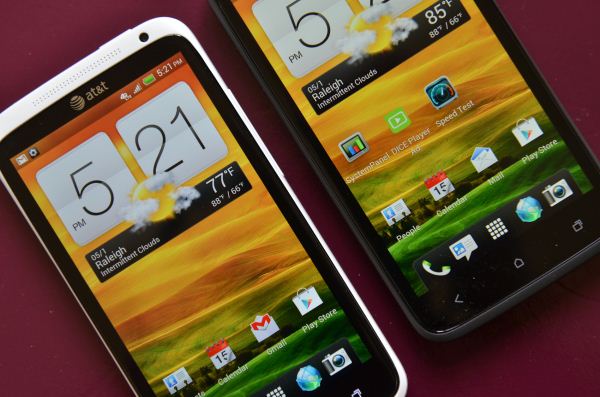


_575px.jpg)
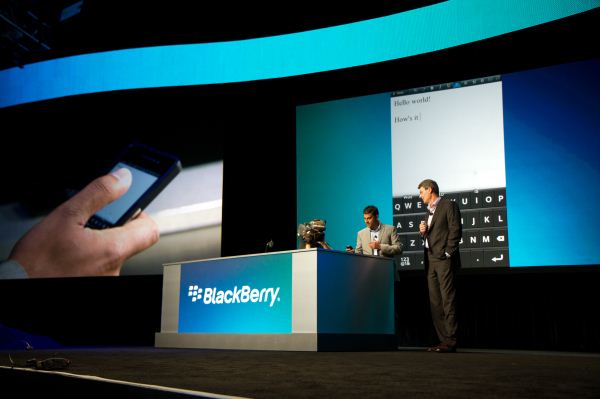
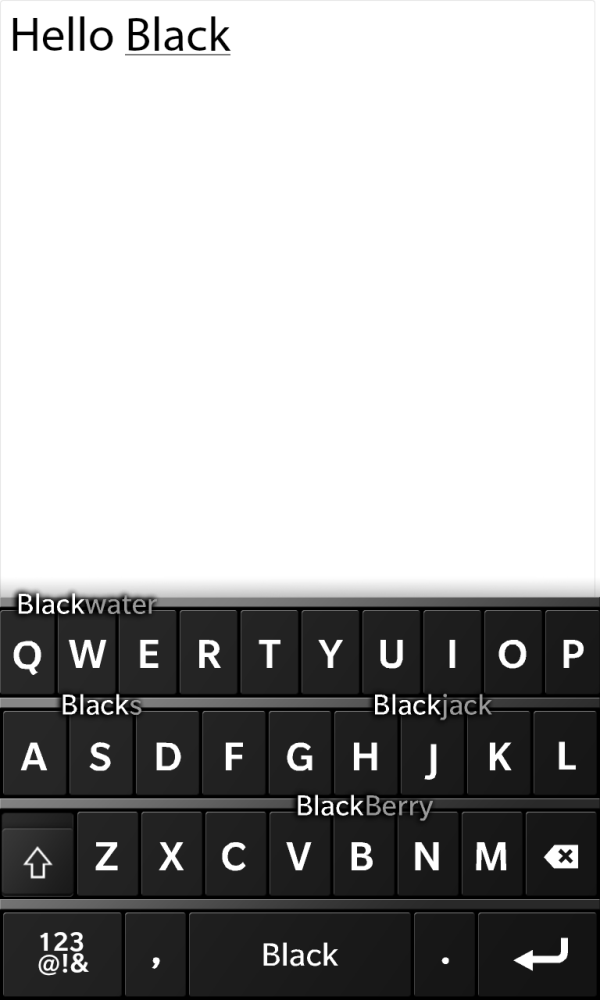

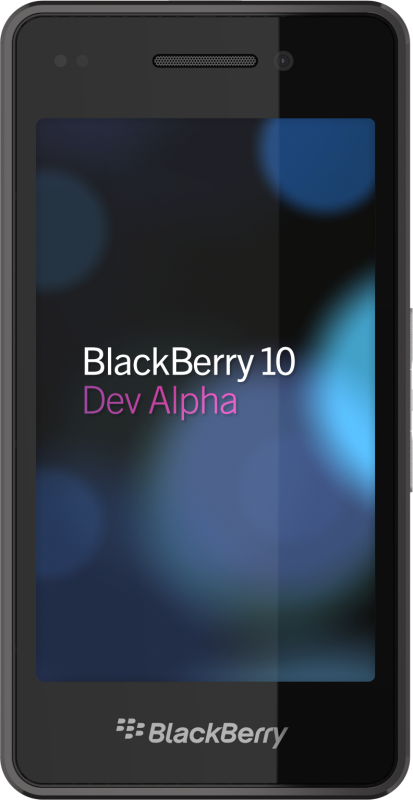
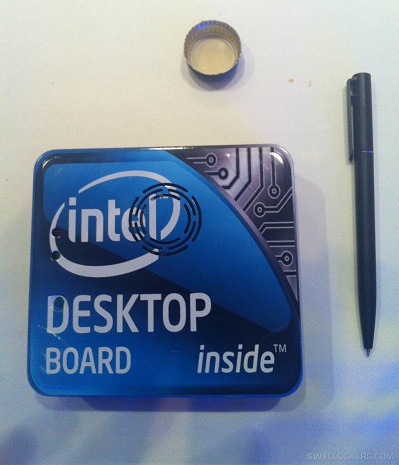

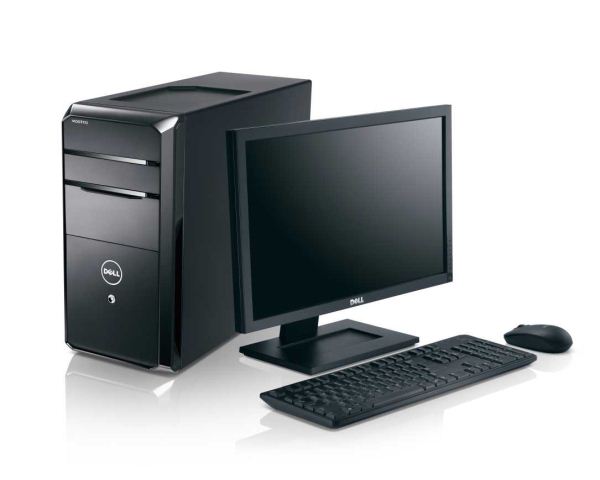
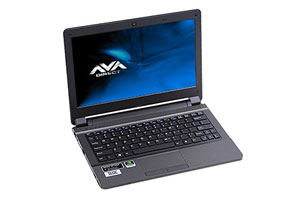


_B_575px.jpg)

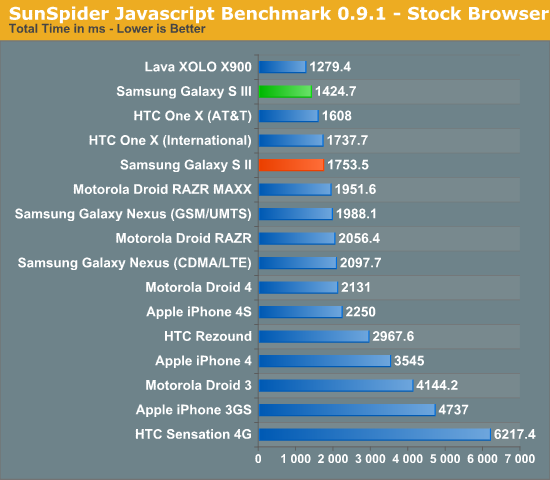
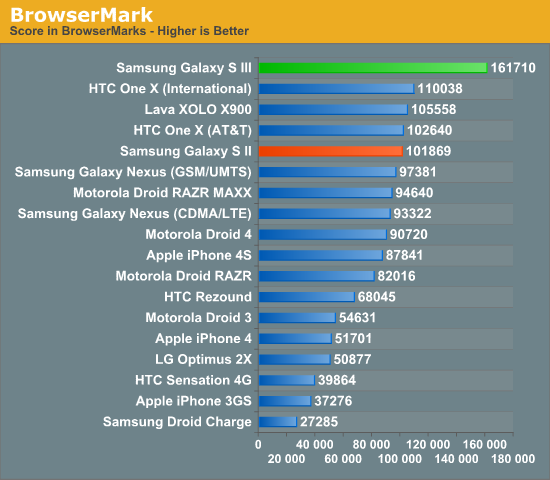

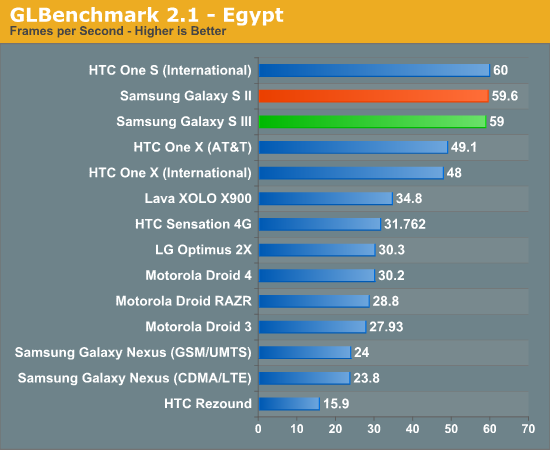
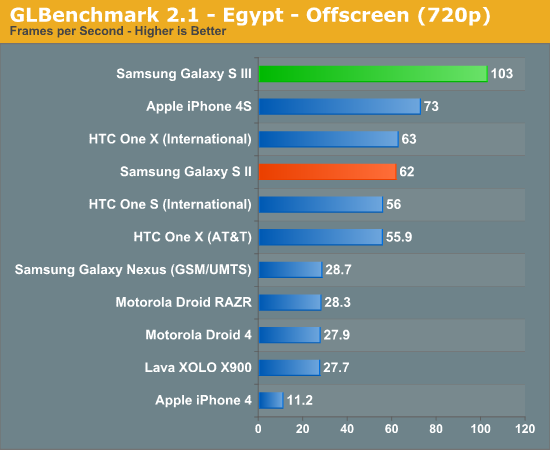
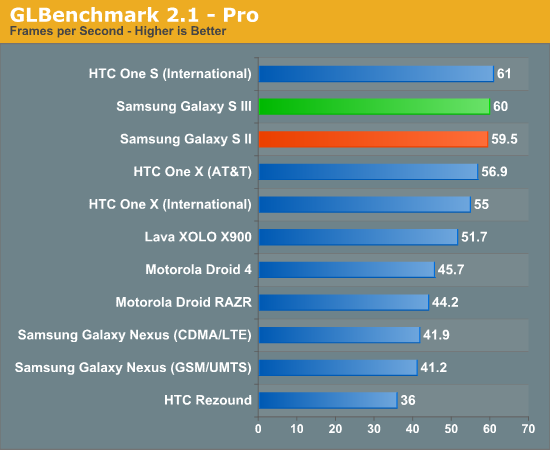
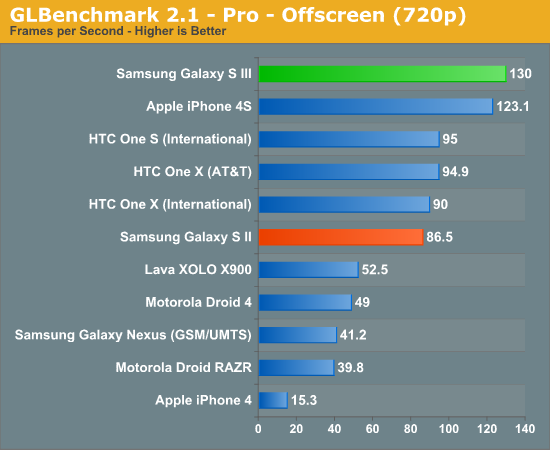
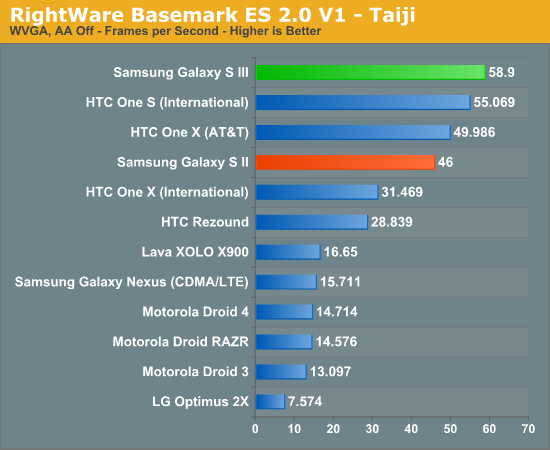
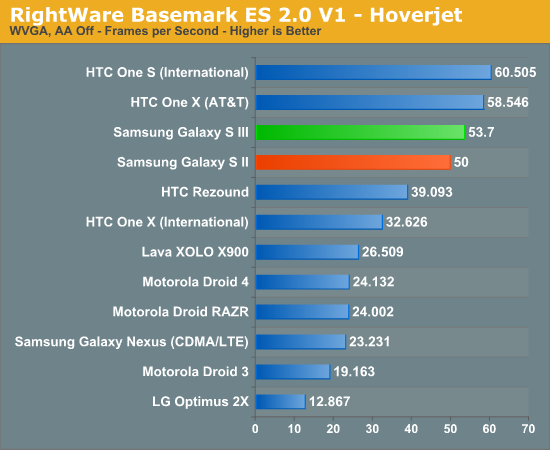
















Bookmarks